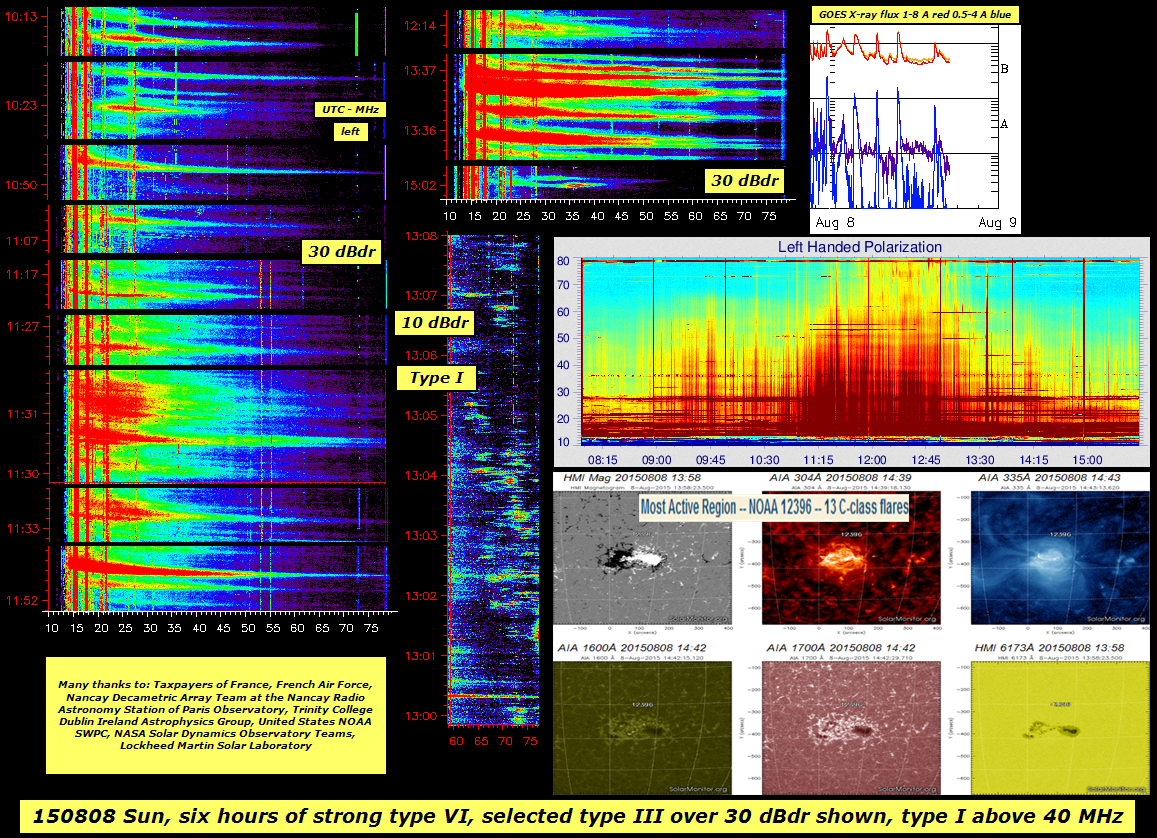Dear Lovers of The Neutron Stars,
Thank you for your FUN work, it keeps me busy when the Sun and Jupiter do not keep me very busy :)
I sometimes wonder what happens at their very center, where temperatures and pressures are truly MONUMENTAL !!
Pulsars were discovered at 81.5 MHz about 50 years ago and I have been studying them since then.
Professor Tremblay at Curtin University in Perth Western Australia, and about 20 of his collaborators around the world, have been doing wonderful things working with the Murchison Widefield Array, a precursor of the Square Kilometer Array.
They have installed equipment to collect time domain data for a total of ~ 31 MHz bandwidth in ~ 1.3 MHz subbands, spread as desired, between 80 and 300 MHz, and observed 10 pulsars.
Read more about it here:
http://arxiv.org/abs/1501.05723
32 references at:
http://adsabs.harvard.edu/cgi-bin/nph-ref_query?bibcode=2015PASA...32....5T&refs=REFERENCES&db_key=AST
Abstract: "The science cases for incorporating high time resolution capabilities into modern radio telescopes are as numerous as they are compelling. Science targets range from exotic sources such as pulsars, to our Sun, to recently detected possible extragalactic bursts of radio emission, the so-called fast radio bursts (FRBs). Originally conceived purely as an imaging telescope, the initial design of the Murchison Widefield Array (MWA) did not include the ability to access high time and frequency resolution voltage data. However, the flexibility of the MWA's software correlator allowed an off-the-shelf solution for adding this capability. This paper describes the system that records the 100 micro-second and 10 kHz resolution voltage data from the MWA. Example science applications, where this capability is critical, are presented, as well as accompanying commissioning results from this mode to demonstrate verification."
....
Monday, August 24, 2015
Saturday, August 15, 2015
Sun Earth Jupiter 2015 August
Many thanks to: STEREO and WIND
Teams, Taxpayers of France, French Air Force, Nancay Decametric Array
Team at the Nancay Radio Astronomy Station of Paris Observatory, Prof.
Dr. Kazumasa Imai Kochi National College of Technology Kochi Japan,
Trinity College Dublin Ireland Astrophysics Group, United States NOAA
SWPC, NASA Solar Dynamics Observatory Teams, Lockheed Martin Solar Laboratory
150808 near 13 UT, CME ring at SOHO C3
SOHO C3
150816 at SOHO C3: Venus past conjunction with Sun, Jupiter approaching conjunction with Sun August 26
Venus at the bottom of the C3 coronagraph image
Jupiter to the left has just entered the C3 field of view

150816-150820, Venus past conjunction, Jupiter approaching conjunction, Coronal Mass Ejection, cosmic ray hits, at SOHO C3
.Sun Earth Jupiter.
---
150808 near 13 UT, CME ring at SOHO C3
SOHO C3
150816 at SOHO C3: Venus past conjunction with Sun, Jupiter approaching conjunction with Sun August 26
Venus at the bottom of the C3 coronagraph image
Jupiter to the left has just entered the C3 field of view

150816-150820, Venus past conjunction, Jupiter approaching conjunction, Coronal Mass Ejection, cosmic ray hits, at SOHO C3
.Sun Earth Jupiter.
Thursday, August 13, 2015
A LOFAR Census of Millisecond Pulsars
With many thanks I refer to:
Kondratiev et al. 2015, "A LOFAR Census of Millisecond Pulsars"
http://arxiv.org/abs/1508.02948
Abstract: "We report the detection of 48 millisecond pulsars (MSPs) out of 75 observed thus far using the LOFAR in the frequency range 110-188 MHz. We have also detected three MSPs out of nine observed in the frequency range 38-77 MHz. This is the largest sample of MSPs ever observed at these low frequencies, and half of the detected MSPs were observed for the first time at frequencies below 200 MHz. We present the average pulse profiles of the detected MSPs, their effective pulse widths and flux densities, and compare these with higher observing frequencies. The LOFAR pulse profiles will be publicly available via the EPN Database of Pulsar Profiles. We also present average values of dispersion measures (DM) and discuss DM and profile variations. About 35% of the MSPs show strong narrow profiles, another 25% exhibit scattered profiles, and the rest are only weakly detected. A qualitative comparison of the LOFAR MSP profiles with those at higher radio frequencies shows constant separation between profile components. Similarly, the profile widths are consistent with those observed at higher frequencies, unless scattering dominates at the lowest frequencies. This is very different from what is observed for normal pulsars and suggests a compact emission region in the MSP magnetosphere. The amplitude ratio of the profile components, on the other hand, can dramatically change towards low frequencies, often with the trailing component becoming dominant. As demonstrated by Dyks et al. (2010) this can be caused by aberration and retardation. This data set enables high-precision studies of pulse profile evolution with frequency, dispersion, Faraday rotation, and scattering in the interstellar medium. Characterizing and correcting these systematic effects may improve pulsar-timing precision at higher observing frequencies, where pulsar timing array projects aim to directly detect gravitational waves."





















































